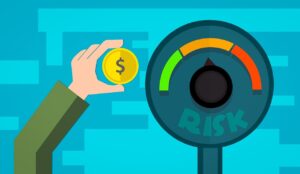
Imagine life as you know it suddenly changing. A bump on the head, a fall, or a sudden blow to the skull can cause a Traumatic Brain Injury (TBI), disrupting brain function. TBIs affect millions globally annually, according to the Centers for Disease Control and Prevention.
These injuries can range from mild to severe and may interfere with critical thinking, memory, speech, movement, and emotions. The road to recovery can be long and complex, often requiring a multifaceted support system. Here, we’ll explore the resources available to help TBI victims navigate their journey back to health.
It’s important to remember that if you or someone you know has suffered a TBI, seeking immediate medical attention is crucial. In some cases, consulting a traumatic brain injury lawyer can also help ensure you receive the compensation and support you deserve.
Medical Support
Getting prompt medical care is critical after a TBI. Even a seemingly minor bump on the head can have serious consequences. Doctors can assess the severity of the injury, identify any bleeding or swelling in the brain, and recommend the best course of treatment.
Several medical professionals play a vital role in TBI care. Neurologists specialize in the nervous system and diagnose and manage TBI-related issues like memory problems or seizures. Neurosurgeons perform surgery to address bleeding or blood clots in the brain caused by severe TBIs. Rehabilitation specialists design personalized programs to help regain physical, cognitive, and communication skills.
Treatment options for TBIs vary depending on the severity of the injury. In some cases, surgery may be necessary to remove blood clots or repair skull fractures. Medications can help manage symptoms like headaches, dizziness, or sleep problems. Therapy is a cornerstone of TBI rehabilitation, encompassing physical, occupational, speech-language, and cognitive therapy to improve function and independence.
For individuals with chronic TBIs, long-term medical management is essential. Regular doctor visits allow for the monitoring of symptoms and medication adjustments as needed. Additionally, ongoing therapy can help manage challenges and adapt to changing needs.
Rehabilitation Services
The road to recovery after a TBI often involves a combination of rehabilitation services. Each type addresses specific needs and works together to maximize potential.
- Physical therapy: Focuses on improving strength, coordination, and balance, helping to regain mobility, and reducing pain.
- Occupational therapy: Teaches daily living skills like dressing, bathing, and cooking, promoting independence in everyday activities.
- Speech-language therapy: Addresses communication difficulties like speaking, understanding, or swallowing.
- Cognitive therapy helps with memory, problem-solving, and focusing, improving a person’s ability to manage thoughts and emotions.
Individualized rehabilitation programs are essential. Therapists assess each person’s unique needs and goals, tailoring a program to target specific deficits. This ensures a more focused and effective recovery journey.
However, accessing and completing rehabilitation programs can be challenging. Insurance coverage may be limited, and finding qualified therapists can be difficult. The intensity and duration of therapy can also be demanding, requiring a significant commitment from the patient and their support system.
Support Groups and Communities
Social and emotional support are powerful allies in the recovery process after a TBI. Feeling isolated or misunderstood can be discouraging. Support groups provide a safe space to connect with others who have similar experiences.
These groups come in various forms: online communities offer flexibility and anonymity, while in-person groups foster a sense of camaraderie. Additionally, some groups cater to specific demographics, like age groups or those with similar injury types, allowing for a more tailored experience.
The benefits of support groups are numerous. Sharing experiences with others who “get it” can be incredibly validating. Learning coping strategies from peers who have successfully navigated challenges can be empowering. Most importantly, support groups reduce feelings of isolation and build a sense of belonging, which is crucial for emotional well-being during recovery.
Finding a support group is easier than ever. Many hospitals, rehabilitation centers, and brain injury associations offer group meetings. Online resources like the Brain Injury Association of America can help you locate support groups in your area.
Financial Assistance Programs
The road to recovery after a TBI can be financially draining. Medical bills, therapy costs, and potential lost wages due to disability can create a significant burden.
Fortunately, several programs can help ease the financial strain. Government programs like Social Security Disability Insurance (SSDI) can provide monthly income for individuals unable to work due to a disability. Medicare and Medicaid can help cover medical costs for those who qualify.
Beyond government programs, many non-profit organizations offer financial assistance to TBI victims. These organizations may provide grants or assistance with specific expenses, like transportation to therapy appointments.
Navigating the financial aid application process can be complex. Here are some tips:
- Research different programs and their eligibility requirements.
- Gather the necessary documentation, such as medical records and proof of income.
- Seek assistance from social workers or patient advocates familiar with TBI resources.
With perseverance and the right support, accessing financial aid can become a reality.
Advocacy and Awareness
A strong voice can make a significant difference. Advocacy for TBI research and improved care paves the way for better treatment options and increased support for victims. Organizations like the Brain Injury Association of America tirelessly champion these causes.
Individuals can play a vital role in advocacy efforts. Donations directly support research and programs. Volunteering your time or skills can benefit organizations working with TBI victims. Raising awareness by sharing your story or educating others about TBI can have a positive impact. Every voice counts in creating a brighter future for those living with TBI.






